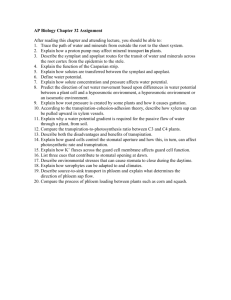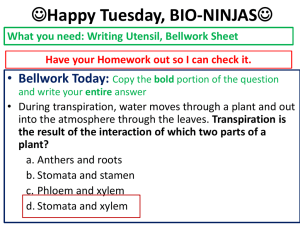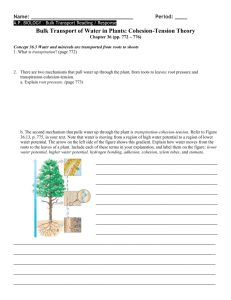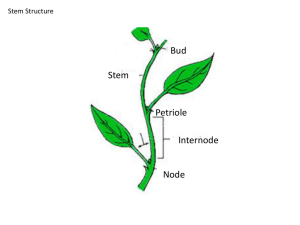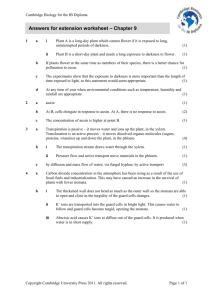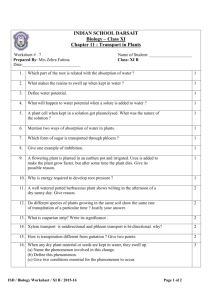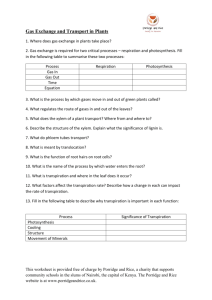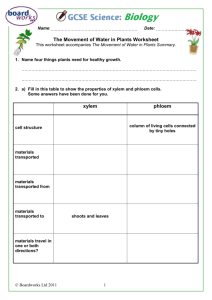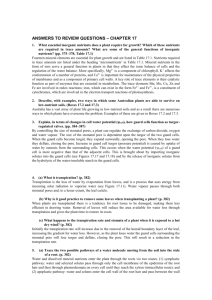Transpiration: Lab Quiz I Answers
advertisement
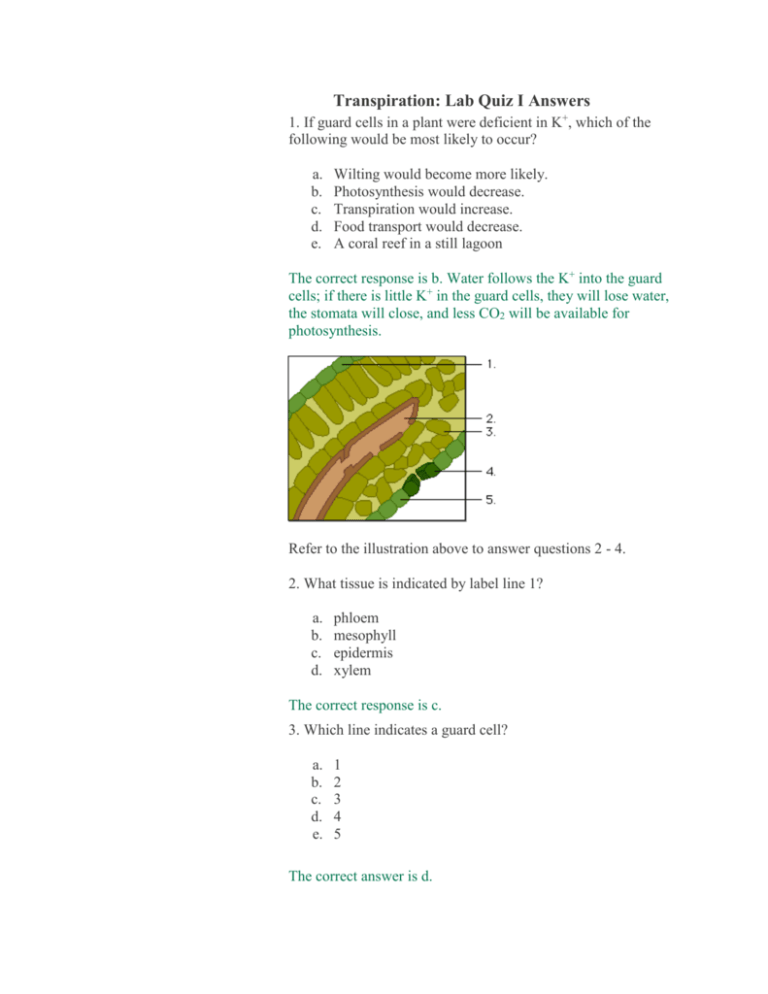
Transpiration: Lab Quiz I Answers 1. If guard cells in a plant were deficient in K+, which of the following would be most likely to occur? a. b. c. d. e. Wilting would become more likely. Photosynthesis would decrease. Transpiration would increase. Food transport would decrease. A coral reef in a still lagoon The correct response is b. Water follows the K+ into the guard cells; if there is little K+ in the guard cells, they will lose water, the stomata will close, and less CO2 will be available for photosynthesis. Refer to the illustration above to answer questions 2 - 4. 2. What tissue is indicated by label line 1? a. b. c. d. phloem mesophyll epidermis xylem The correct response is c. 3. Which line indicates a guard cell? a. b. c. d. e. 1 2 3 4 5 The correct answer is d. 4. Which type of cells are indicated by label line 2? a. b. c. d. parenchyma xylem phloem epidermis The correct response is b. 5. Several factors account for the movement of water up xylem vessels. Which single factor is most important in pulling water toward the top of a tall tree? a. b. c. d. Evaporation of water through stomata Osmosis in the root Capillary action Atmospheric pressure The correct response is a. It is this evaporation that provides the transpirational pull to move water to the top of a tall tree. 6. All of the following enhance water transport in terrestrial plants EXCEPT: a. Hydrogen bonds linking water molecules b. Capillary action due to adhesion of water molecules to the walls of xylem c. Evaporation of water from the leaves d. K+ being transported out of the guard cells The correct answer is d. When K+ leave the guard cells, water follows, the guard cells become flaccid, and the stomata close. As a result, transpiration doesn't take place. 7. Under conditions of bright light, in which part of a transpiring plant would water potential be lowest? a. b. c. d. Xylem vessels in the leaves Xylem vessels in the roots Root hairs Spongy mesophyll of the leaves The correct answer is d. Water moves from a region of high water potential to a region of low water potential. The region of lowest water potential would be at the farthest end of the transpiration pathway. 8. What type of environment would result in the greatest rate of transpiration? a. b. c. d. Cloudy, humid conditions Warm, humid conditions Warm, light-breezy conditions Cool, humid conditions The correct answer is c. In breezy conditions the rate of transpiration would be very high because of evaporative water loss.
